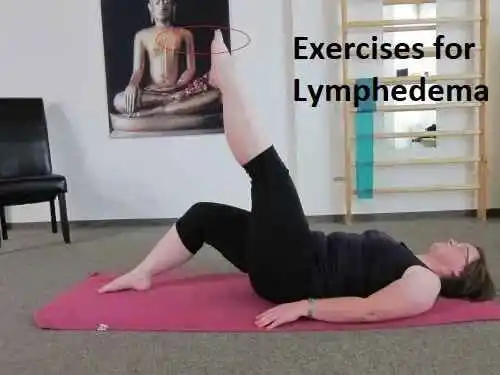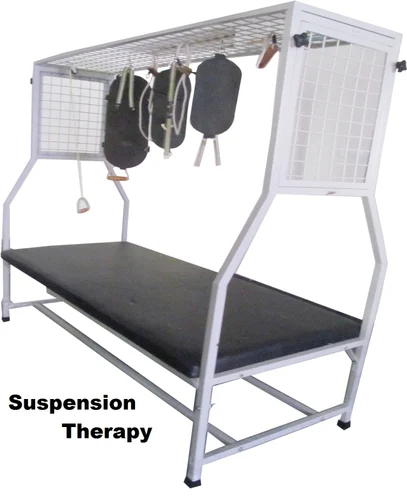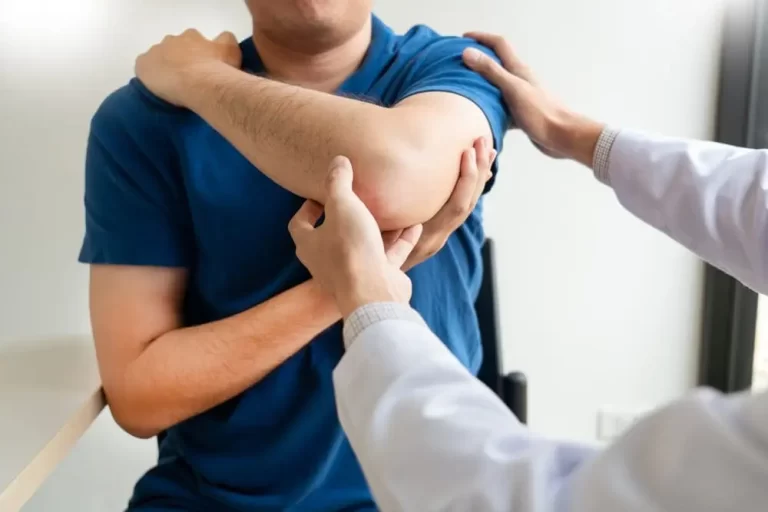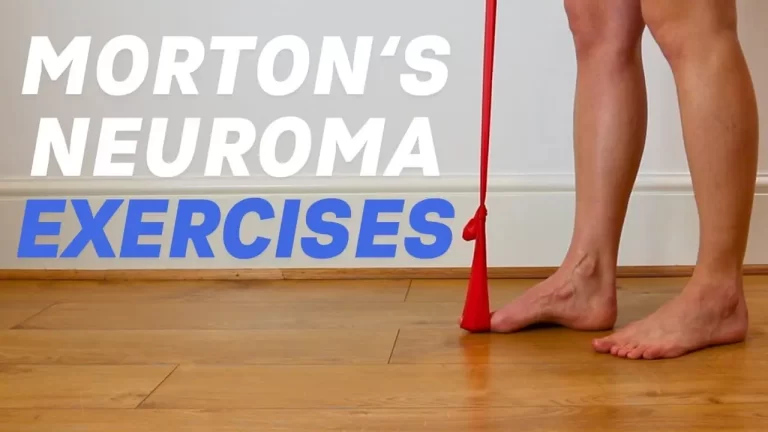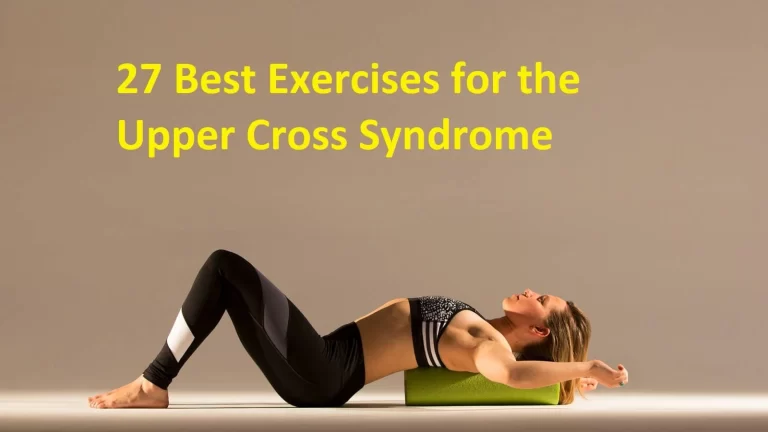20 Best Exercises for Lymphedema
Exercises for lymphedema are an essential part of your overall treatment strategy since they help in the flow of blood through the affected limb, improve general health and muscular strength, and lessen edema.
Exercise can increase the range of motion and power in the affected leg or limbs, improve overall fitness and quality of life, and be done without aggravating symptoms of lymphedema.
What is a lymphedema?
A buildup of fluid in the fatty tissue below the skin, known as lymphedema, is the result of a separated or injured lymphatic system. The swelling usually follows along with other symptoms. Cellulitis is a skin infection that can result in lymphedema, which can cause numbness, tingling, and pain in the affected area. Major health issues might come up from lymphedema if treatment is not received.
When the lymphatic system isn’t working properly, your body holds onto fluid and can start gaining weight. The hands and legs are typically affected by edema, although it may affect other body parts as well. Additionally, lymphedema increases the risk of infection. After some surgeries, certain medical illnesses, or genetic diseases, you may develop lymphedema. You could develop lymphedema right away, which indicates that there is no known cause.
There may be minimal symptoms of lymphedema, such as little pain and swelling. Frequently, lymphedema can cause significant swelling, which can be uncomfortable and lead to skin issues including infections. Although doctors cannot treat lymphedema, they can provide therapies to lessen its pain and swelling. You can take a lot of steps to reduce the potential impact lymphedema may have on your quality of life.
Women receiving treatment for breast cancer are more likely to develop lymphedema in the hand and arm on the side of the affected breast. Patients with breast cancer who receive radiation and surgery face the risk of developing lymphedema. Breast cancer treatment includes axillary (underarm) lymph node removal, radiation, and scar tissue, all of which can cause lymphedema. Strength training and other upper limb exercises can help reduce upper body lymphedema. Lifting light weights helps the body recover lost fluid and promotes lymphatic fluid flow throughout the body.
Your physician might recommend this course of action;
- Compress clothes: These cloth sleeves allow lymph fluid to flow by exerting pressure on the affected limb.
- Compression devices: To reduce lymph build-up, these compression sleeves are attached to a pump that runs automatically and releases pressure on your limb on an arranged schedule.
- Exercise: Light exercise can help keep your affected leg stable and promote lymph drainage.
- Bandages: These, when correctly wrapped, can help in directing lymph fluid toward the center of your body. Additionally, you can wear them to prevent lymphatic fluid from leaking back into the wounded leg.
Signs and symptoms of lymphedema:
- Repeated lymphedema patients often refer to reduced limb flexibility, tightness, or feeling heavy in the affected limb, as well as difficulty dressing comfortably.
- Additional concerns associated with lymphedema include cellulitis and lymphangitis, which are enlargements of the lymphatic veins and connective tissues.
It is important to look for medical attention from a qualified lymphedema therapist or medical expert if you experience any of the signs and symptoms of lymphedema.
How does physical activity help in lymphedema?
Reducing the swelling caused by lymphedema should be your primary priority as it can result in various symptoms. You or your therapist can perform specific arm and leg exercises at home to help reduce lymphedema. Exercise is one of the best ways to treat lymphedema.
Your body’s muscles are stimulated when you exercise, and this can help your lymph fluid move more freely away from swollen places. Reducing swelling and other symptoms related to lymphedema can be controlled by maintaining a healthy weight. Frequent activity helps in this process as well. As recommended by your doctor, a lymphedema treatment plan may include regular exercise and nutrition changes.
Preparing for Lymphedema Exercises:
Before starting any exercise therapy, discuss it with your doctor. A physiotherapist with experience in lymphedema may also be recommended to you. Avoid performing these workouts if you have recently had surgery until your stitches and surgical drains are removed.
When exercising, put your compression sleeve on the arm that is affected if you have lymphedema. If your arm begins to pain, swell, or become red, stop exercising. Put on loose clothing, like a flowing dress. Before starting, warm up your hands and affected areas with a warm bath or shower. This will help your muscles relax.
These exercises restore your body’s supply of lymphatic fluid, which helps lessen edema. To get the maximum benefits, perform these exercises every day. Use your compression clothing regularly.
- Take it easy or stop if the affected limb is tired or uncomfortable.
- Build increases gradually after starting a little.
- Before starting any resistance or weight training, speak with your therapist.
- Every exercise session should begin and end with breathing exercises.
- Stay away from hot tubs, saunas, steam rooms, and hot baths as these could make edema worse.
What you need to start exercising is as follows;
- One set of free weights, (one pound).
- Compression sleeve for components in concern.
- Flexible ball.
- A firm chair for sitting.
- A room large enough to lie down on.
Exercise for Lymphedema of the arm:
A few arm lymphedema exercises can promote lymphatic flow to minimize arm edema and help with upper-body lymphedema. You can reduce your symptoms by performing these exercises daily.
Deep breathing exercise
- On the ground, settle into a comfortable sitting position.
- Breathe in through your nose.
- Allow the air to fill your stomach.
- To exhale, use your nose.
- Put your hand over your abdomen.
- Place the other hand over your chest.
- When you breathe in, your stomach grows.
- As you let go of your breath, your stomach grows smaller.
- Breathe deeply and fully three more times.
- As your stomach expands and contracts with each breath, take a deep breath.
- Then relax.
- For no more than five minutes, keep breathing in this manner.
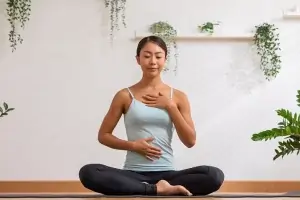
Ball Squeeze
- When sitting or standing, have your shoulders relaxed and your neck and back straight to keep the right posture.
- The exercise ball is easily gripped between your fingers and palms.
- Raise your arm above your chest and extend it forward.
- Keeping your arm raised, press the ball as hard as you can with the tips of your fingers.
- Hold the pressure for about a few seconds then let go.
- Then return to your neutral position.
- Then relax.
- Repeat this exercise 5 to 10 times.
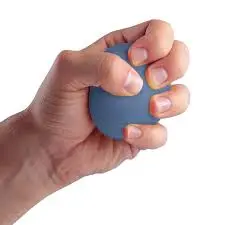
Elbow Flexion
- You can maintain proper posture when sitting or standing, keeping your neck and back straight and your shoulders relaxed.
- With the palm of your hand facing up
- then grasp a one-pound free weight.
- Cover your lap with your hands.
- Lift your hand to your chest and lightly flex your elbows.
- Stop raising your hand when they are halfway up, then hold the position for five seconds or so.
- Then return to your neutral position.
- Then relax.
- Repeat this exercise 5 to 10 times.
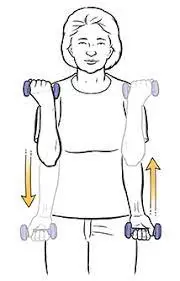
Elbow Extension
- This is a movement you can perform with both arms.
- You must begin this exercise by laying down supine and maintaining a straight back and neck.
- Maintain a straight lower back while bending at the knees.
- Make sure both of your feet are flat and spaced apart on the ground.
- For this exercise, use a one-pound free weight in your hand.
- Give each other a shoulder-width distance.
- Raise your arm vertically above your body.
- Slowly bend your elbows while raising both hands to your chest.
- Once you reach a ninety-degree angle with your elbow flexed, stop moving.
- Hold this position for a few seconds.
- Then return to your neutral position.
- Then relax.
- Repeat this exercise 5 to 10 times.
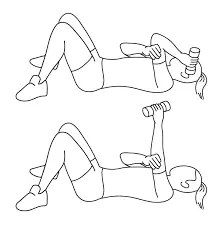
Shoulder flexion
- This exercise requires you to start with your arms by your sides and a straight posture.
- With both hands, hold a one-pound free weight with the palms facing your body.
- Lift both arms gradually while making a little, controlled movement.
- Hold this posture for five seconds after your arms are almost overhead.
- Once your hands are back at your sides, gradually lower your arms.
- Do not swing, just maintain control.
- Then return to your neutral position.
- Then relax.
- Repeat this exercise 5 to 10 times.
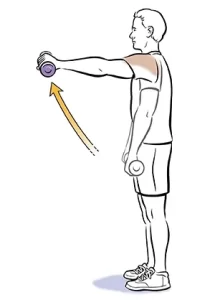
Shoulder Abduction
- Exercises for abduction of the shoulder can be done with both hands.
- This exercise requires you to start standing straight with your arms by your sides.
- With both hands, take hold of a one-pound free weight, palms facing forward.
- With a gentle, careful raise both arms to your sides slowly.
- Take a moment to stop and maintain this pose for a few seconds while your arms are not quite overhead.
- Put your hands back on the floor and then raise your arms a little at a time.
- Keep your arms raised and moving gradually.
- Then return to your neutral position.
- Then relax.
- Repeat this exercise 5 to 10 times.
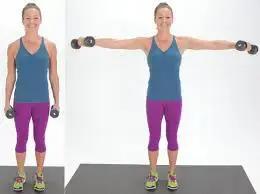
Shoulder shrug
- Start in a standing stance with your feet flat on the floor.
- Place your feet shoulder-width apart.
- Keeping your arms by your sides, turn your hands toward each other.
- Now, lean over and grasp the weights if you are using them for the workout.
- Not past, but slightly bent to meet your toes, is how your knees should be.
- Maintain a straight neck, face ahead, and an elevated chin.
- Gradually lift your shoulders above your ears.
- As you progress, take time and notice how your muscles feel.
- After you release the breath, put your shoulders back to the starting position to repeat the action.
- Then return to your neutral position.
- Then relax.
- Repeat this exercise 5 to 10 times.
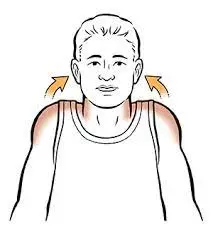
Shoulder horizontal adduction
- Both arms can be utilized for performing the shoulder horizontal adduction.
- You must lie down on your back with your legs bent to begin this workout.
- Now grasp a one-pound dumbbell in each of them.
- Raise both arms straight up above your body and slowly raise them until you can bring your palms together, without bending your elbows.
- Hold this position for a few seconds.
- Then return to your neutral position.
- Then relax.
- Repeat this exercise 5 to 10 times.
Exercises for Leg Lymphedema:
We’ll go over some of the best lower-body lymphedema exercises below, along with instructions for performing them.
Static quadriceps exercises
- Stretch your legs out in front of you as you sit down with your back supported.
- Roll up the small towel under your knee and get the other foot toward you, pushing the first one slightly to the side.
- Your thigh muscles will contract as you firmly press your knee down.
- Hold this position for a few seconds.
- Then return to your neutral position.
- Then relax.
- Repeat this exercise 5 to 10 times.
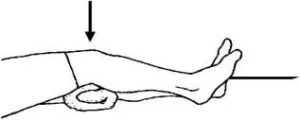
Knee to chest
- Start by relaxing and lying down on the ground.
- At the moment, flex one knee while maintaining a straight leg.
- With your knee bent, pull it up to your chest and hold it there with your hands.
- Maintain the opposite leg on the ground.
- If it makes you feel more comfortable, you can place a tiny pillow below your head and neck.
- Bend your other knee as well and keep your foot flat on the floor if maintaining the opposite leg straight during the stretch causes back pain.
- Maintain a flat back on the ground.
- Hold this position for a few seconds.
- Then return to your neutral position.
- Then relax.
- Repeat this exercise 5 to 10 times.
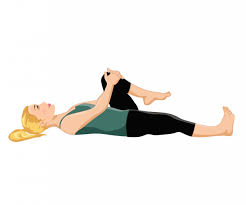
Leg raises on the wall
- A yoga mat should first be pressed up towards the wall until its short edge touches it.
- Manage anywhere from five to twenty minutes (if you have never practiced before, start with a few minutes).
- Once you’re seated on the mat with your back against the wall, turn to a laying position and stretch your legs up the wall.
- You should be able to move your legs comfortably in this position, so feel free to move closer or farther away from the wall as needed.
- Gently carefully inhale, shifting your focus from your feet to your head and back again as you exhale.
- Step to the other side and raise your legs to your chest to exit the pose.
- After a short while, carefully raise yourself to a sitting position after slipping into a child’s posture.
- Then relax.
- Repeat this exercise 5 to 10 times.
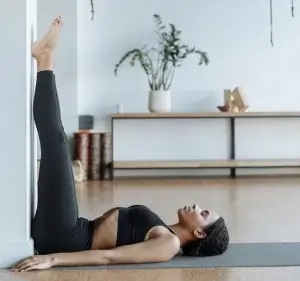
Leg cycle
- You start the leg cycle exercise by lying on your back with two cushions under your feet for support.
- After that, you must lift your legs off the pillows and do a leg cycle.
- After five cycles, take a two-minute break.
- Along with this workout, you can also perform swimming, running, and walking.
- Then return to your neutral position.
- Then relax.
- Repeat this exercise 5 to 10 times.
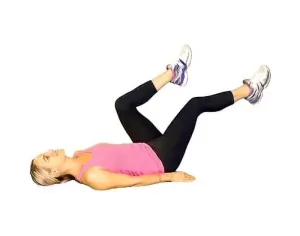
March in place
- Keep your feet hip-width apart, maintain a straight stance, and bend your elbows to a 90-degree angle.
- Elevate your left leg and similarly extend your right elbow.
- Then return to your neutral position.
- Then relax.
- Repeat the exercise on the other side.
- Repeat this exercise 5 to 10 times.
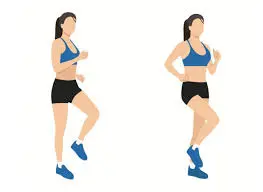
Straight leg raise
- To start, settle into a comfortable supine position on the floor or bed.
- For now, only flex one knee.
- After that, carefully raise your whole leg off the table.
- On the other knee, stay at the same height.
- Hold it for a few seconds.
- Return your leg to the floor gradually.
- Then return to your neutral position.
- Then relax.
- Repeat this exercise 5 to 10 times.
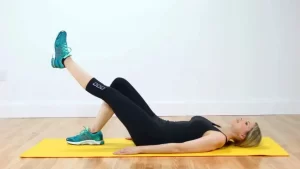
Leg extension
- Start with a relaxing seating position on the chair’s edge.
- Now extend your one leg to the ceiling.
- Hold this position for a few seconds.
- To put your foot back on the ground, straighten your knee.
- Then relax.
- Repeat this exercise 5 to 10 times.
Ankle circle
- Take a seat comfortably on ground level to begin.
- To begin, carefully turn your ankle left and right in circles.
- You could even find it more convenient to try drawing the letters with your foot up.
- Use your big toe as a lead.
- Reduce the amount of movement you make and focus on using only your ankle and foot, not your entire leg.
- Then return to your neutral position.
- Then relax.
- Repeat this exercise 5 to 10 times.
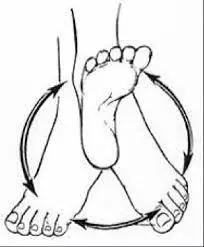
Hip Abductors
- Try to find a level place to rest, like a table or countertop.
- Lift one leg to the side and return it to the middle while standing tall and strong.
- Avoid leaning into your hips and maintain a straight posture.
- During these exercises, you should be able to feel your hip muscles, but always remember to go slowly and pay attention to your body.
- Then return to your neutral position.
- Then relax.
- Repeat this exercise 5 to 10 times.
Exercise for neck and head lymphedema
To lessen swelling and ease pain, you might try a few simple lymphedema exercises that focus on your head and neck. Do not push yourself during any exercise. Proceed only as far as feels safe.
Head turn
- Maintain an upright back and neutral shoulders while sitting.
- Turn your head to one side so that it feels as though you are looking over your shoulder while keeping your chin straight.
- Tighten your neck muscles gently.
- Hold this position for a few seconds.
- Then return to your neutral position.
- Then relax.
- Repeat this exercise 5 to 10 times.
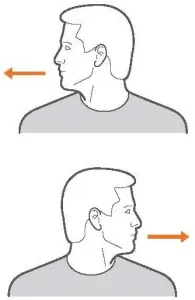
Head tilt
- Start with a relaxing seating position on the chair or table.
- Keep your neck and spine straight.
- Turning the neck begins at the ear and continues carefully toward the shoulder.
- Your neck muscles should be somewhat stretched.
- Hold this position for a few seconds.
- Then return to your neutral position.
- Then relax.
- Repeat this exercise 5 to 10 times.
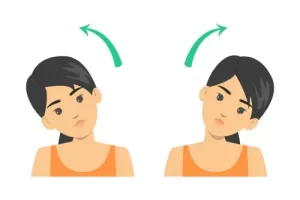
Chin to Chest
- With your head looking forward, lower your chin until it touches your chest or until you are unable to move it any farther without pain.
- For a few seconds, maintain this position.
- After that, carefully raise your head back upright and maintain a straight front expression.
- Then return to your neutral position.
- Then relax.
- Repeat this exercise 5 to 10 times.
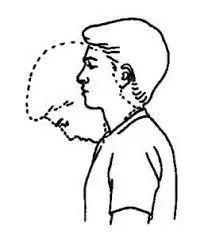
Exercise Safety Precautions:
- Exercise should be stopped if you experience any pain.
- Wear loose clothing so that your body may move easily when going out.
- Holding your breath while exercising is never recommended. When you exercise, you should take deep breaths and release them slowly. Inhaling deeply causes your blood pressure to rise and your muscles to tense.
- Stay hydrated
When did you stop exercising?
- Fever
- If you feel pain in your chest.
- Suppose you experience an unexpected loss of breath or exhaustion.
- If you frequently suffer from leg pain or cramping.
- If pain in your back, neck, or bones disappears after resting.
- If you have an irregular heartbeat.
Precautions for Lymphedema:
Be alert for symptoms of infection, such as pain, redness, swelling, or an increase in body temperature. If you have a fever or any of these symptoms, contact your doctor right immediately.
- Maintain a healthy diet: Being overweight might strain the lymphatic system more. Losing weight may help reduce edema if you are heavy because it releases adipose tissue that obstructs lymphatic pathways and contains fluid.
- Inform the healthcare provider that you have a lymphatic disease whenever they take your blood pressure, draw blood, give you an injection, or do acupuncture on the affected extremities.
- Avoid exposure to the sun and minimize sudden changes in temperature on your skin. Increased blood flow due to warmer skin may worsen edema.
- Keep insects away since their bites and stings can cause rashes that worsen lymphedema.
- Stay away from intense repetitive motions and heavy weight lifting with the affected limb. Excessive stress causes suddenly fast blood flow through the muscle, which worsens edema. Never use the arm that is involved to carry large bags on an over-the-shoulder strap.
- Straight-across nail cutting can result in an injury that permits pathogens to enter the body, so it is best to avoid doing so.
- Utilize an electric razor to prevent skin punctures and infections that follow.
- Stay away from jewelry and tight apparel as these things may harm a circulatory system that is already weakened.
- It is best to refrain from using the affected arm in repetitive motions like scraping, pushing, or pulling.
- Maintain proper hygiene and keep skin dry and clean by using sensitive soap. Use shoes if you’re going for a walk around the neighborhood.
- Wearing a squeeze sleeve that fits properly is essential for lymphedema patients who are traveling or who are at risk.
Summary:
Daily arm and leg exercises can facilitate the body’s lymph fluid’s recovery into the bloodstream. Your leg and arm should start to swell less, and you’ll feel better and have less pain. Quality of life and body image are frequently improved as well.
FAQ:
Is it okay to exercise when you have lymphedema?
As long as they follow a few basic rules, exercise is safe for those who have lymphedema. Wearing compression garments or bandages is important if you have lymphedema and you must exercise.
Does exercising worsen my lymphedema?
No. While exercising is safe for those with lymphedema, it should be done under the therapist’s supervision. A progressive weightlifting program significantly decreased the risk of lymphedema episodes during exercise by 50%.
Why is wearing a compression garment while working required?
Wearing compression clothing increases the muscle pumps’ effectiveness in removing fluid from your face, body, and/or limbs. If there is no compression, the increased lymph fluid production and expanded circulation will gather in the swollen, or lymphedematous, areas.
Which are the beneficial lymphedema practices?
It is best to avoid prolonged sitting and standing. Throughout the day, you have to move and shift positions. Take care that your shoes and socks fit correctly.
How can lymphatic circulation improve?
There are various simple and efficient methods to improve the function of your lymphatic and cardiovascular systems:
Drink a lot of water.
Engage in regular exercise, including strength and aerobic training.
Eat a balanced diet.
Over the affected area, massage.
Try the manual lymph draining method.
In what way will you manage lymphedema infection?
Here, we discuss preventing lymphedema. By avoiding blood pressure checks or injections on the side that is affected. Cuts and scrapes must be treated right away with an antiseptic ointment. To minimize bug bites, apply an insect repellent.
Which activity is ideal for those with lymphedema?
Your physician might advise you to continue doing low-impact activities like yoga, tai chi, walking, or swimming. If you were physically active before surgery, your physician might advise modest lifting, brisk walking, or short periods of cycling.
Can lymphedema be reversed by exercise?
Keeping physically active is essential for lymphoedema management. Engaging in physical activity strengthens your muscles, which promotes the lymphatic system’s ability to move lymph fluid and helps it out of the swollen area. It can help you in keeping a healthy weight, which can lessen the swelling caused by lymphoedema.
How can someone with leg lymphedema sleep?
With an adjustable bed, you can simply raise your legs above your heart level, which can be a great tool for controlling lymphedema. This posture lessens swelling and pain in the affected limbs by promoting the lymphatic fluid’s return to the heart.
Is lymphedema self-repairing?
Early-stage lymphedema may resolve on its own without medical intervention. Later stages of the illness are irreversible since the lymph system cannot be restored once it has been harmed. That does not imply, however, that lymphedema symptoms cannot be controlled.
Does lymphedema go down when you walk?
Fluid is encouraged to enter the abdominal lymphatic system by physical exercise. Tai chi, yoga, pilates, walking, and swimming can all help to stimulate lymph movement.
Can lymphedema be helped by yoga?
Lymphedema patients who practice yoga typically concentrate on postures and breathing exercises that stimulate lymph flow from the extremities toward the body. This can progressively improve flexibility, strength, and balance while reducing tension and pain.
What measures should you avoid taking when you suffer from lymphedema in your legs?
You may have worsening symptoms of leg lymphedema from specific activities or behaviors. Long lengths of time spent sitting or standing, tight clothing, intense heat or cold, high-impact activities, skin injuries, and an excessive salt diet are a few things that can be harmful. Try to avoid being around them. It’s important to understand the self-care methods and resources you can turn to in the event of an episode.
Is lymphedema reversible?
Lymphedema may appear months or years after treatment. This constant, ongoing illness has no known treatment. However, some actions can be taken to lessen or eliminate the symptoms as well as help prevent them from happening. Lymphedema may worsen if treatment is not received.
How can the lymphedema in my legs be lessened?
Elevating Affected Areas: Try to keep your affected arm or leg elevated above your heart whenever possible. Continue moving: To keep fluids flowing during your recovery, find gentle methods to move about. Stay away from extremely hot temperatures: The risk of lymphedema may increase in extreme heat.
Which exercises are beneficial for lymphatic elimination?
Walking, dancing, swimming, yoga, tai chi, and other activities that involve large muscles. To improve the flow and release of lymph fluid throughout the body, large muscular activities induce muscle squeezing and pumping.
References:
- P. Tirgar (2023 December). Mobile Physio: The Greatest Lymphedema Exercises. Mobile Clinic for Physiotherapy. The best exercises for lymphedema can be found at https://mobilephysiotherapyclinic.in/
- February 10, 2024; Sturm, K. For Physical Therapy in Cancer Rehab, Try These Seven Lymphedema Leg Exercises to Feel Your Best. PT for Cancer Rehab: Leg Exercises for Lymphedemahttps://www.cancerrehabpt.com/blog
- Tactile Medical: How to Perform Lymphedema Exercises (2024, February 28). For instructions on performing lymphedema exercises, see Tactile Medical.
- Image 2, Ocn, S. M. R. March 9, 2022. A Step-By-Step Guide to Arm Lymphedema Exercises. Verywell Medical. Arm lymphedema exercises: https://www.verywellhealth.com/how-to-do-exercises-430210
- Image 3, C. E. L. C. Egypt (n.d.-b). ipcphysicaltherapy.com is the website of IPC Physical Therapy Center. Workout-full. asp?ExercisesID=70 at https://www.ipcphysicaltherapy.com
- Image 4, Arm and Shoulder Exercises You Can Do at Home (n.d.). Arm-shoulder exercises can be found at https://myhealth.alberta.ca/breast-cancer-surgery/at-home
- Image 5, Flexing the Shoulders (Strength). (As of now). Saint Luke’s Medical Center. Shoulder Flexion Strength: https://www.saintlukeskc.org/health-library/
- Image 6, 85861364: Virtual Shop. (n.d.). 85861364.html at https://freemuseet.shop/product_details.
- Image 11, 2024 May 15; Newlyn, E. The positive benefits of standing with your legs up the wall. Eckhart To Yoga. Legs up the wall pose (Viparita Karani) Visit https://www.ekhartyoga.com/articles/ for further information.
- Image 12, Online Store 51765571 (n.d.). Here is the product details page for 51765571 at superfffmk. life.
- Image 13, Flat Stock Vector (Royalty Free) of a Woman Marching Place Exercise 2103622766 | Shutterstock (n.d.). Image vector: woman exercising at a march place (#2103622766) from Shutterstock.com with the following parameters: utm_campaign=image, utm_medium=googleimages, and utm_source=schema
- Image 20, [2015, June 30] Back4life. Flexion Stretch: Chest to Chin at Back 4 Life Wellness Center. The Back 4 Life Wellness Center. Bend, stretch, chin, and chest at https://back4life.com.au/

